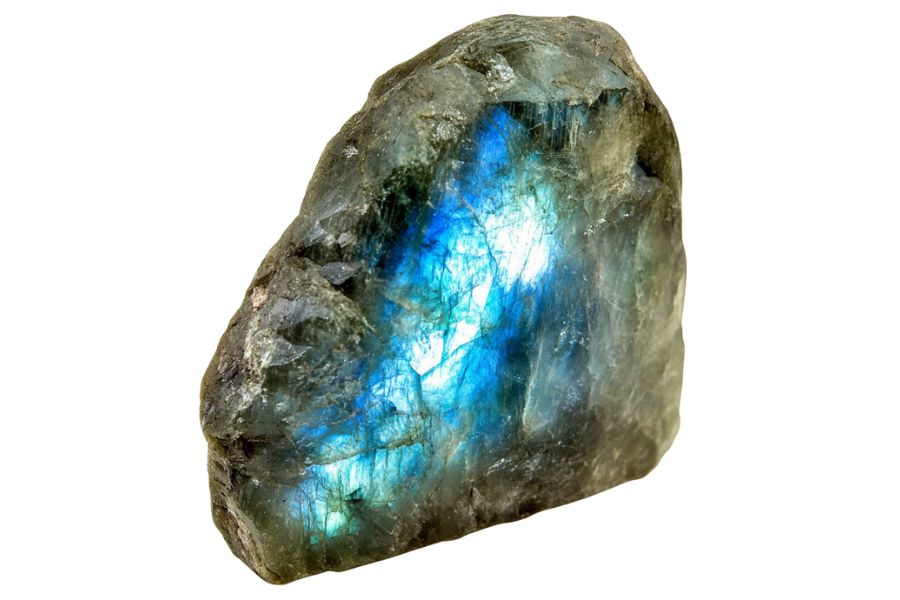Labradorite catches the eye with its blue and green flashes when light hits it just right. This pretty stone draws rock lovers to hunt for it across Illinois.
Many don’t know that good spots exist to find this stone in the state. Local quarries and creek beds often yield small pieces after a good rain.
The search for labradorite can be fun for the whole family. Grab some basic tools, wear sturdy shoes, and head out on a weekend. Even beginners can get lucky and spot the telltale shimmer in the dirt or gravel.
How Labradorite Forms Here
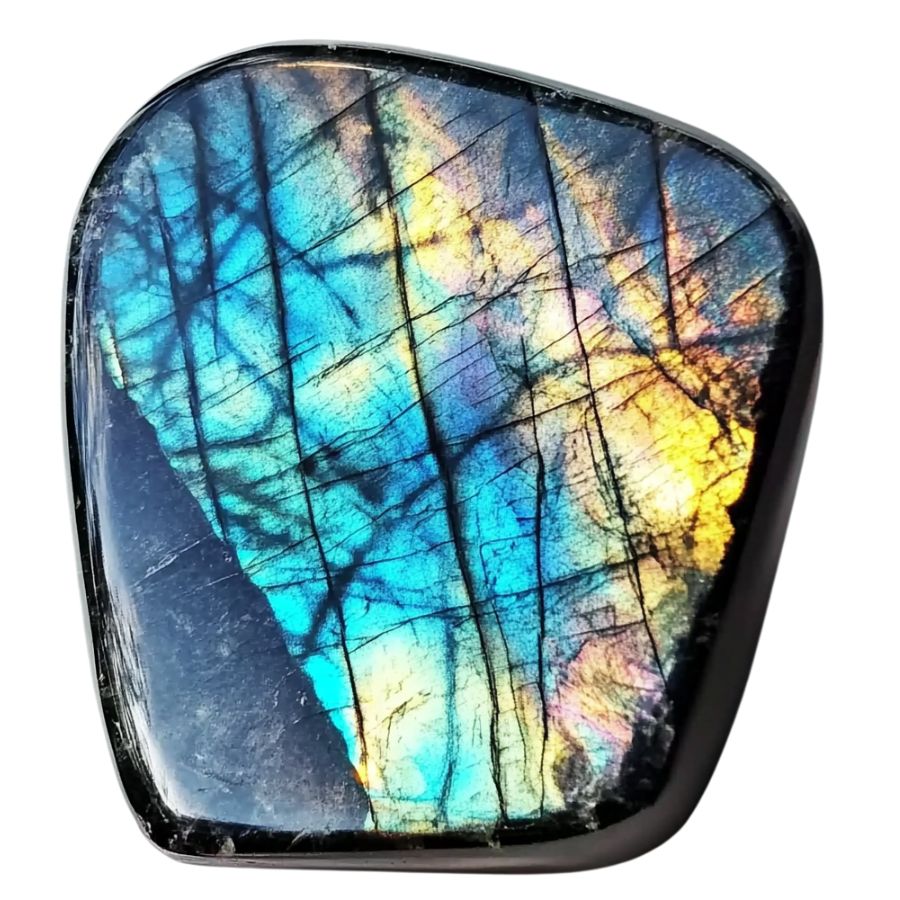
Labradorite forms deep underground when magma slowly cools and crystallizes. The process happens when different minerals separate while cooling, creating thin layers stacked on top of each other. These layers have slightly different chemical makeups, usually about 1 micron thick.
When light hits these layers, it creates that stunning blue-green flash we love, called labradorescence. The stone starts out as a mix of calcium, sodium, aluminum, and silicate minerals.
As it cools, these minerals organize themselves into this layered pattern, which happens most often in places where magma intrudes into the surrounding rock. It’s like nature’s own light show, frozen in stone.
Types of Labradorite
Labradorite comes in several distinct varieties. Each type exhibits special qualities that make it sought after by collectors.
Blue Labradorite
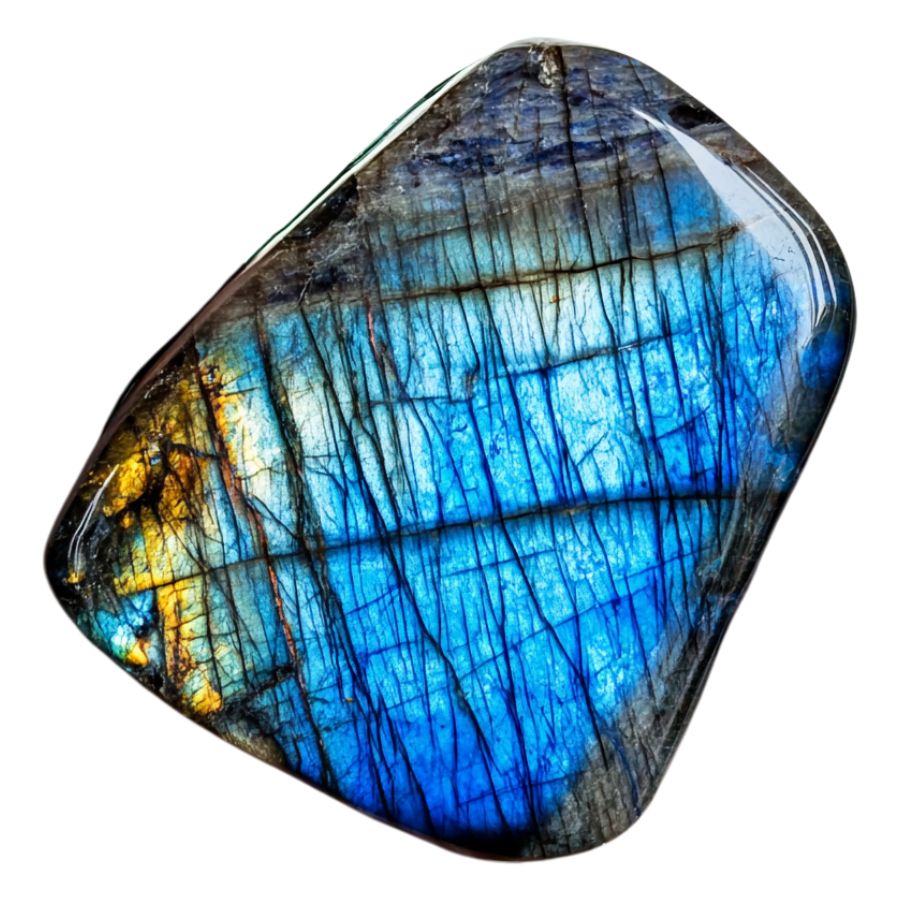
Blue Labradorite stands out for its remarkable blue iridescence against a dark gray or black background. When light hits the stone’s surface, it creates a stunning display of electric blue flashes, sometimes accompanied by hints of green or violet.
The blue flashes appear most vivid when viewing the stone from specific angles, creating an almost magical transformation as you rotate it. This effect is often compared to the ethereal beauty of the Northern Lights.
Exceptional specimens display an intense, electric blue flash that covers a large portion of the stone’s surface. Some pieces also show secondary colors like aqua or sea green, adding depth to their visual appeal. The contrast between the dark base and bright blue flashes makes each piece unique.
Golden Labradorite
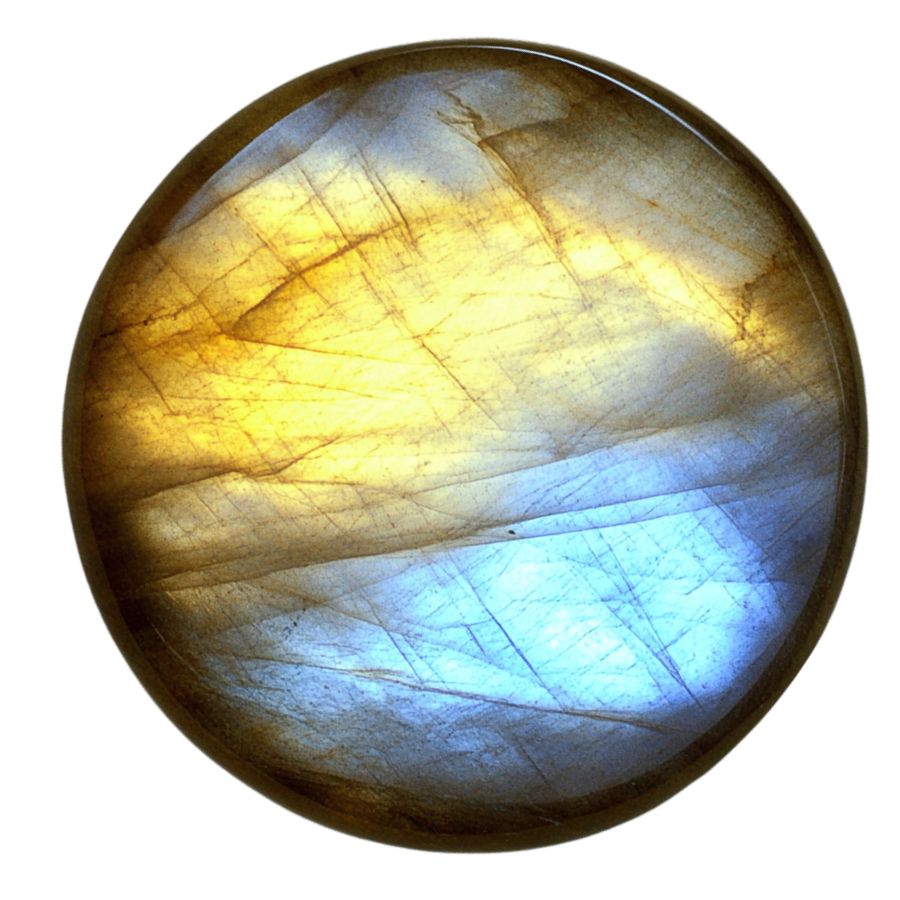
Golden Labradorite displays a mesmerizing golden-yellow sheen that sets it apart from other varieties. The stone’s surface exhibits brilliant flashes of gold and amber, creating a warm, sun-like glow that seems to emanate from within. These golden rays often appear alongside subtle hints of green or champagne colors.
What makes Golden Labradorite special is its ability to display multiple golden hues simultaneously. Some specimens show a range of colors from pale yellow to deep amber, creating a multi-dimensional effect.
The golden flash can vary in intensity and coverage, with premium specimens showing broad, bright areas of gold schiller.
Rainbow Moonstone
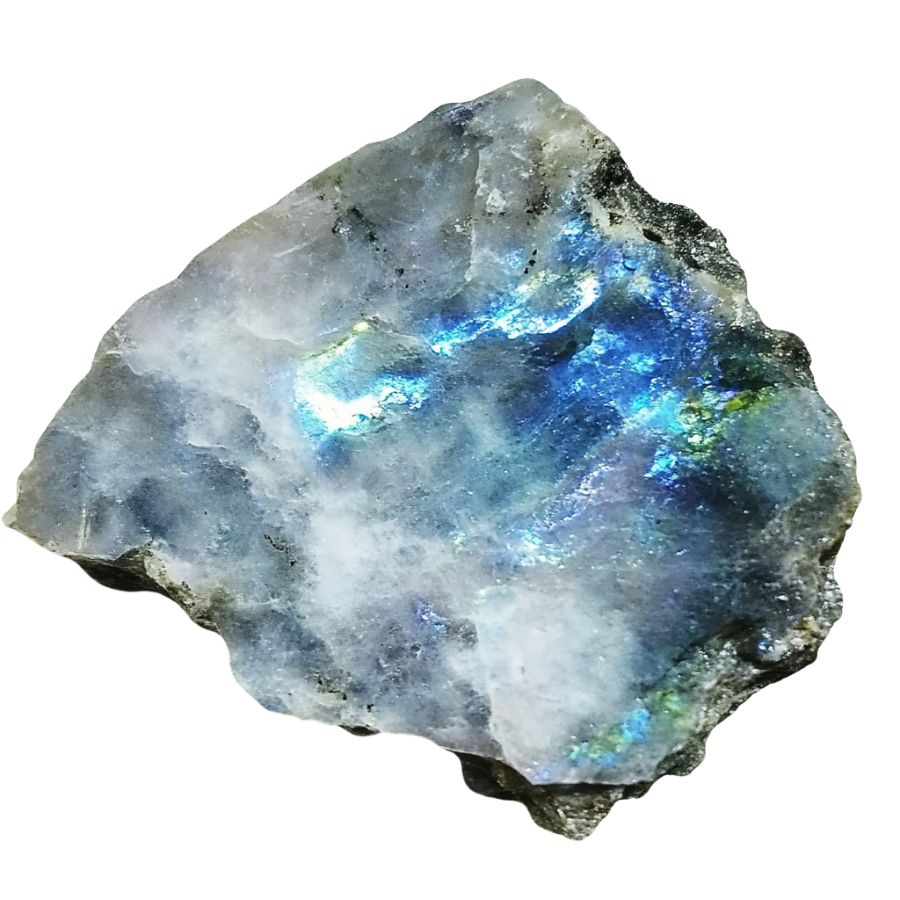
Rainbow Moonstone Labradorite exhibits a distinctive white or colorless base with an enchanting blue sheen that floats across its surface. Blue sheen is often accompanied by flashes of other colors, including pink, yellow, and green.
This stone’s most captivating feature is how its colors appear to float just beneath the surface, creating an almost three-dimensional effect. As light moves across the stone, these colors shift and change, revealing new patterns and combinations. This creates a dynamic display that seems to change with every movement.
The stone’s transparency can range from translucent to semi-transparent, with the most valued pieces showing excellent clarity beneath their shimmering surface.
Spectrolite
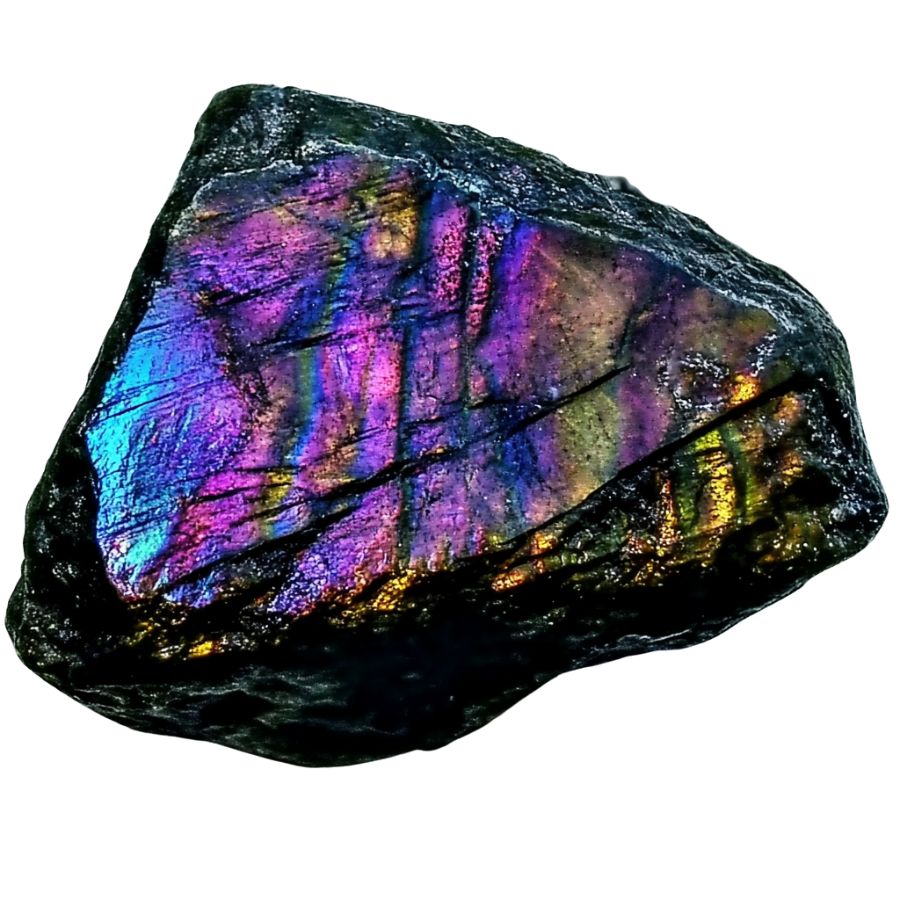
Spectrolite reigns as the most dramatic member of this stone family, with its distinctive jet-black base setting it apart from other varieties.
What makes it truly special is that premium specimens can simultaneously display the complete spectrum of colors, from deep indigo to bright orange, emerald green to royal purple, all in a single piece.
The finest specimens possess what experts call “full-face color,” meaning the vibrant display covers most of the stone’s surface rather than appearing in small patches.
This characteristic, combined with its remarkable color intensity, has earned Spectrolite its reputation as the most visually impressive variety of all similar stones.
Transparent Labradorite

Transparent Labradorite exhibits a remarkable clarity that separates it from its opaque cousins. Crystal-clear areas allow light to pass through, creating an exceptional display of blue flashes against the transparent background.
Natural specimens often show areas of both transparency and translucency. Beautiful color changes occur as you move this stone, with the transparent areas revealing subtle blue sheens that seem to float within the crystal.
Some pieces display additional colors like soft greens or pale yellows, though the blue flash remains dominant.
Remarkable clarity combines with the signature color play to create stones that appear almost liquid-like.
Andesine-Labradorite
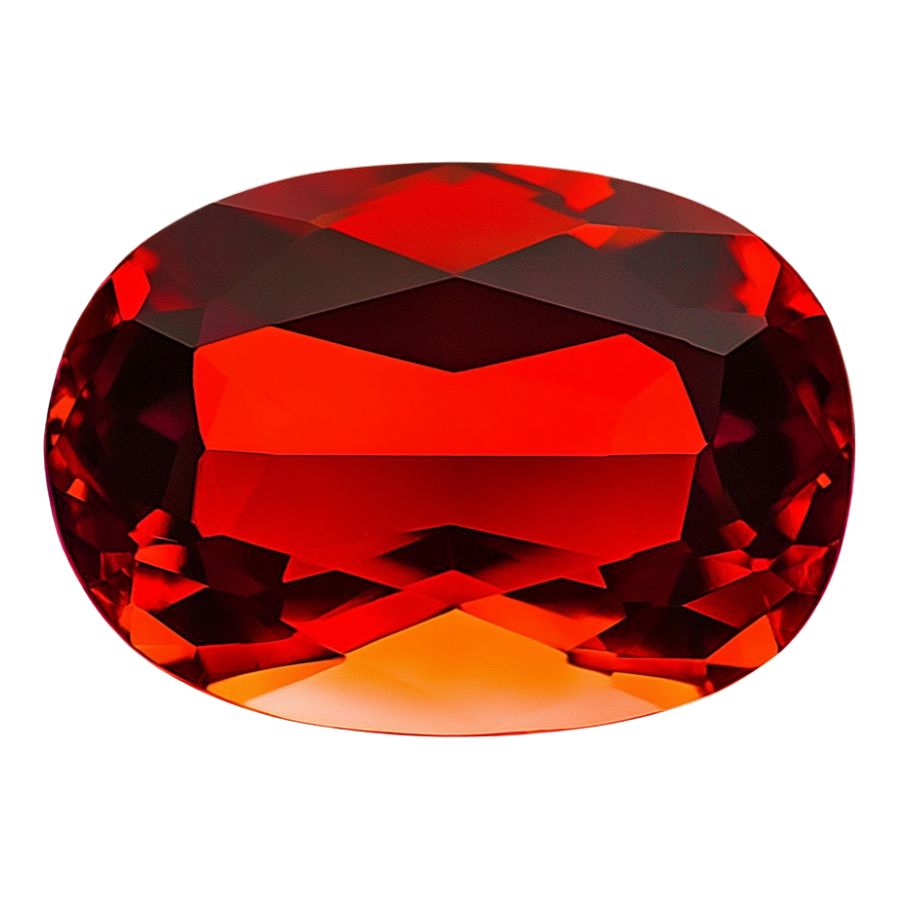
Reddish-orange hues dominate Andesine-Labradorite’s appearance, creating a warm and inviting glow. Delicate green and yellow streaks often appear throughout the stone, adding complexity to its color palette.
Metallic sparkles dance across the surface, different from the typical labradorescent effect. Fresh discoveries of this relatively new gemstone continue to reveal new color combinations.
Striking color variations appear in high-quality pieces, ranging from deep red to bright orange. Many specimens show subtle color zoning, where different hues blend together in distinct patterns.
Black Labradorite
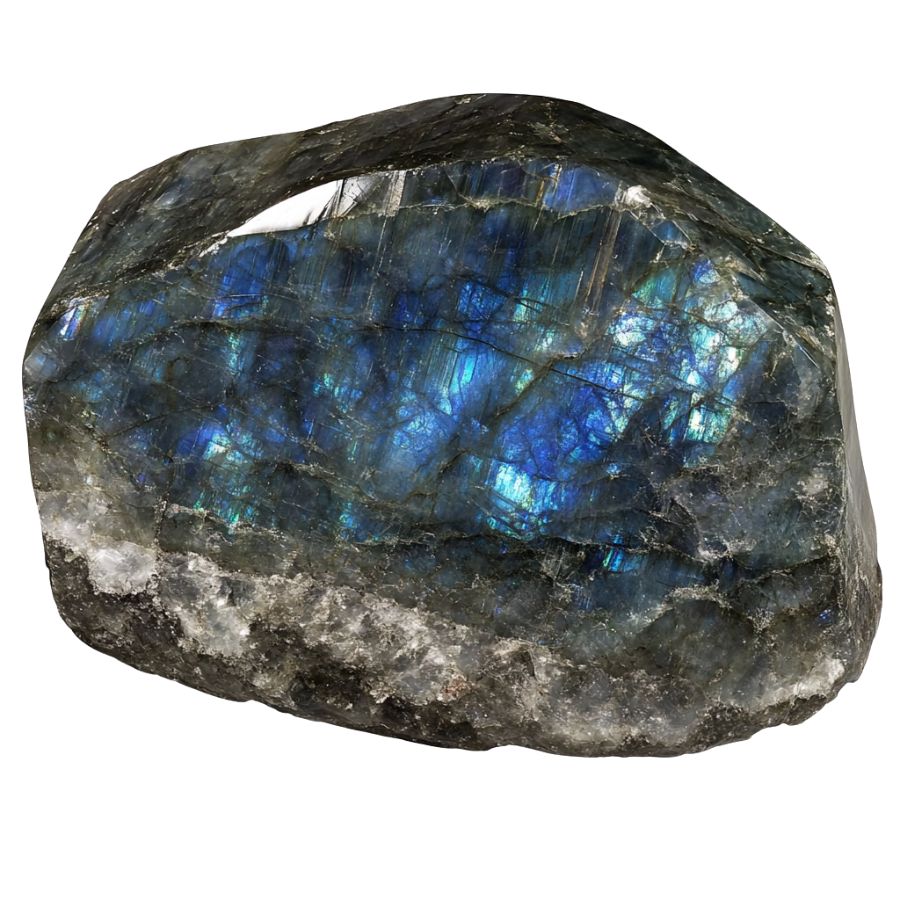
Black Labradorite presents a dramatic dark canvas that emphasizes its colorful display. Bright flashes of color stand out dramatically against the deep black background, creating stunning visual contrast.
Most specimens show multiple colors at once, creating an eye-catching display. These color displays often include electric blues, emerald greens, and golden yellows, all visible simultaneously.
Natural sunlight brings out the boldest displays, while artificial light can highlight subtle color variations. Some specimens also show interesting patterns in how the colors are distributed.
Brown Labradorite
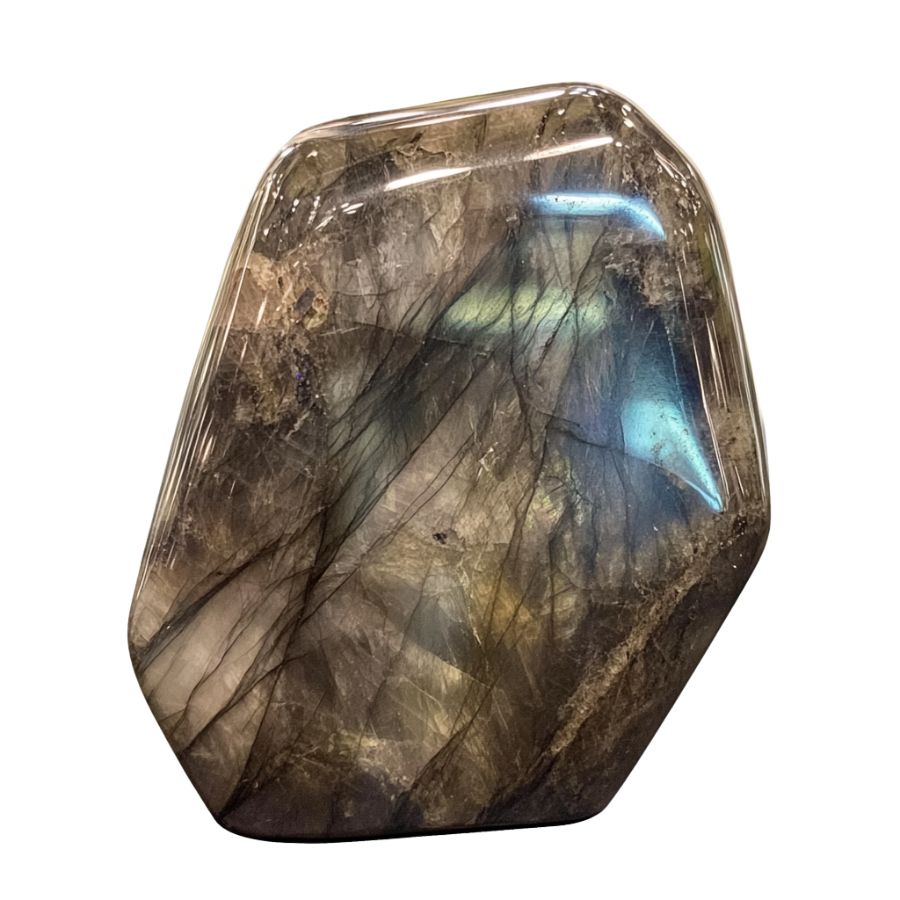
Brown Labradorite features rich earth tones ranging from deep chocolate to warm amber. Peach and orange undertones often appear throughout the stone, creating depth and dimension.
Multiple color zones create interesting patterns within each stone. These patterns can include stripes, swirls, or mottled areas that combine different brown and orange hues.
Subtle iridescence sometimes appears on the surface, adding an unexpected shimmer to the earthy colors. This effect is more subdued than in other varieties but adds an interesting dimension to the stone’s appearance.
If you want REAL results finding incredible rocks and minerals you need one of these 👇👇👇
Finding the coolest rocks in isn’t luck, it's knowing what to look for. Thousands of your fellow rock hunters are already carrying Rock Chasing field guides. Maybe it's time you joined the community.
Lightweight, mud-proof, and packed with clear photos, it’s become the go-to tool for anyone interested discovering what’s hidden under our red dirt and what they've already found.
Join them, and make your next rockhounding trip actually pay off.
What makes it different:
- 📍 Find and identify 140 incredible crystals, rocks, gemstones, minerals, and geodes across the USA
- 🚙 Field-tested across America's rivers, ranchlands, mountains, and roadcuts
- 📘 Heavy duty laminated pages resist dust, sweat, and water
- 🧠 Zero fluff — just clear visuals and straight-to-the-point info
- ⭐ Rated 4.8★ by real collectors who actually use it in the field
What Rough Labradorite Looks Like
Labradorite in its rough form can be tricky to spot, but once you know what to look for, it becomes easier. Here’s how to recognize this fascinating stone in its natural state.
Look for the Signature Flash

Raw labradorite often shows patches of its famous iridescent flash, even when unpolished. Check dark gray or black areas under direct sunlight – you might catch glimpses of blue, green, or gold shimmer.
Sometimes, you’ll need to wet the surface slightly to see this effect better. The flash isn’t always obvious but usually appears as scattered patches.
Check the Base Color and Texture

The main body should be dark gray to black, sometimes with a slight greenish tinge. The surface feels smooth but not glossy, similar to unpolished glass.
Look for a slightly bumpy texture with occasional flat surfaces. Fresh breaks will show a more uniform color than weathered surfaces.
Assess the Hardness and Breakage
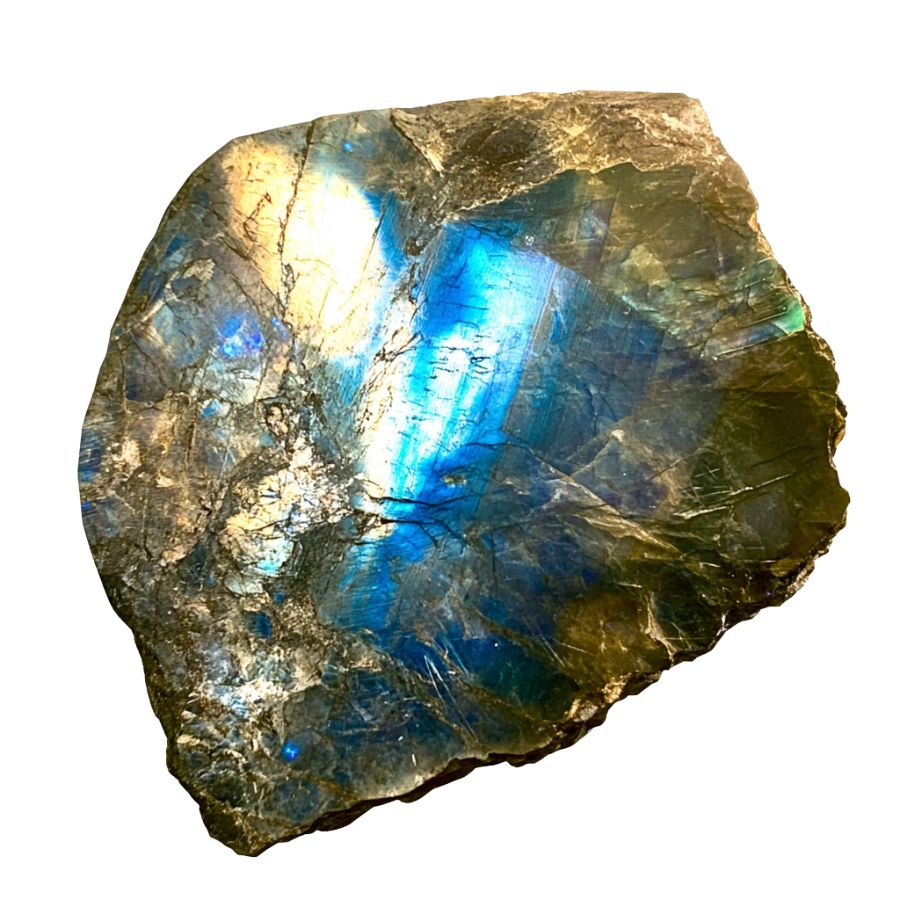
Try scratching the surface with a copper penny – it shouldn’t leave a mark. The stone often breaks with smooth, flat surfaces at distinct angles.
You’ll notice these angular breaks are pretty characteristic, unlike random rough breaks in common rocks.
Test the Translucency
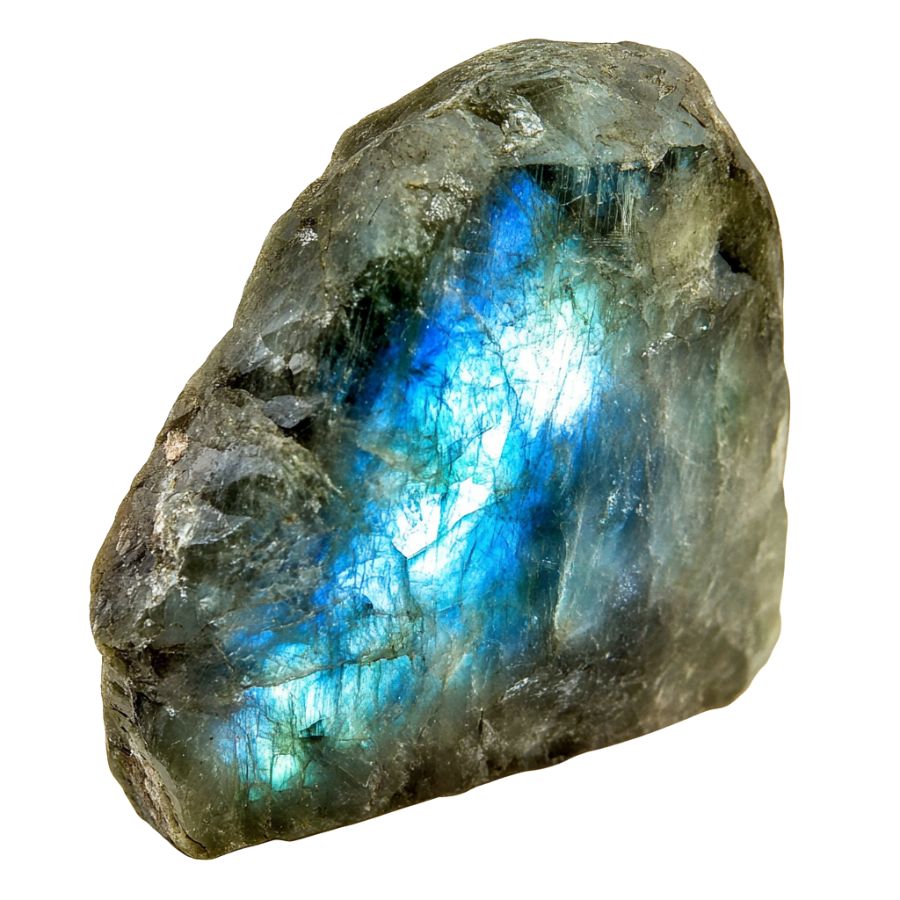
Hold a thin edge up to strong light. Raw labradorite should show some translucency, appearing slightly cloudy rather than completely opaque. The edges might look slightly whitish or gray when light passes through. Thicker pieces will appear darker and more opaque.
A Quick Request About Collecting
Always Confirm Access and Collection Rules!
Before heading out to any of the locations on our list you need to confirm access requirements and collection rules for both public and private locations directly with the location. We haven’t personally verified every location and the access requirements and collection rules often change without notice.
Many of the locations we mention will not allow collecting but are still great places for those who love to find beautiful rocks and minerals in the wild without keeping them. We also can’t guarantee you will find anything in these locations since they are constantly changing.
Always get updated information directly from the source ahead of time to ensure responsible rockhounding. If you want even more current options it’s always a good idea to contact local rock and mineral clubs and groups
Tips on Where to Look
Labradorite isn’t super common in everyday places, but with some smart searching, you can find it. Here’s where you should look:
Metamorphic Rock Formations
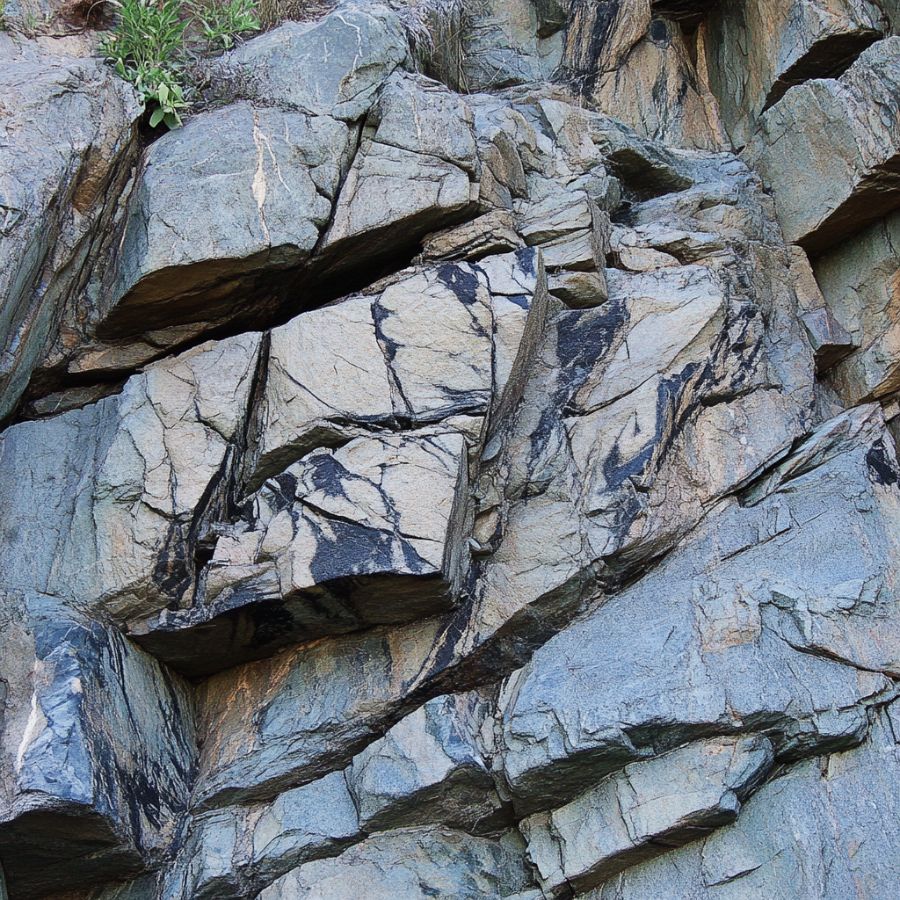
Look for dark-colored rock outcrops. Spot areas with lots of feldspar minerals. Check exposed cliff faces. Sometimes, when the sun hits just right, you might catch that signature blue flash from larger formations that’s a dead giveaway for labradorite presence.
Glacial Deposits
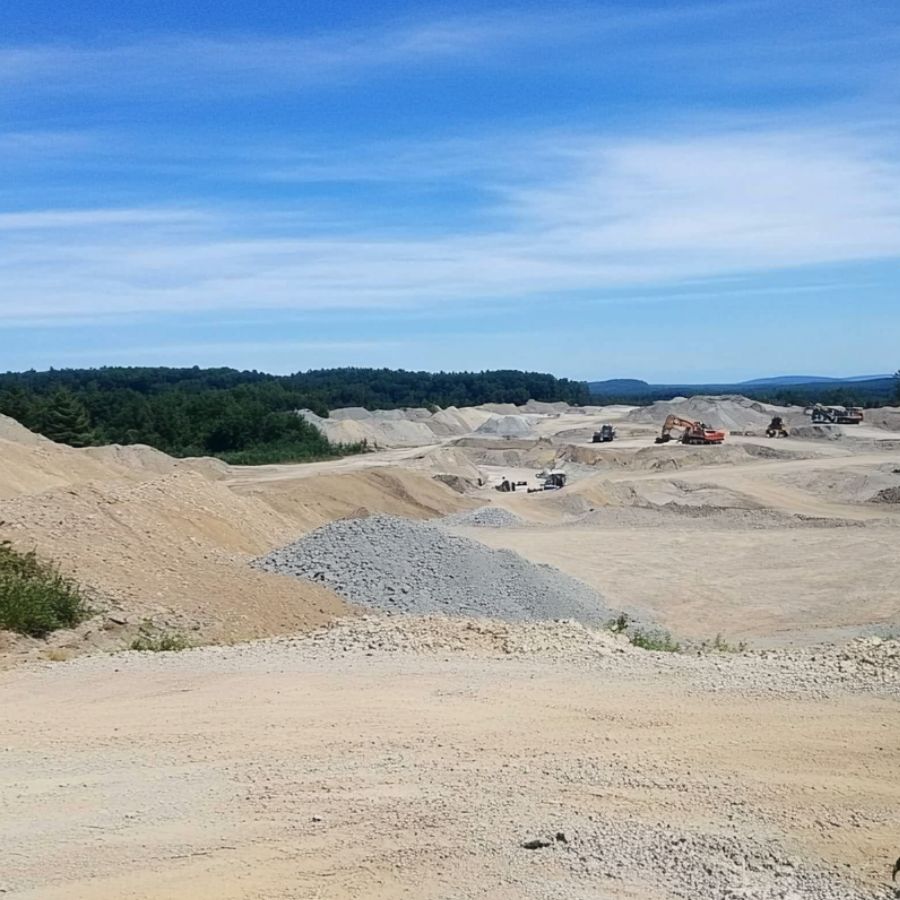
Search river beds after glacial deposits. Check gravel pits near old glacial paths. Look for smooth, dark gray stones mixed with other rocks. These deposits often contain chunks of labradorite that have broken off from larger formations and been carried downstream over thousands of years.
Mining Tailings
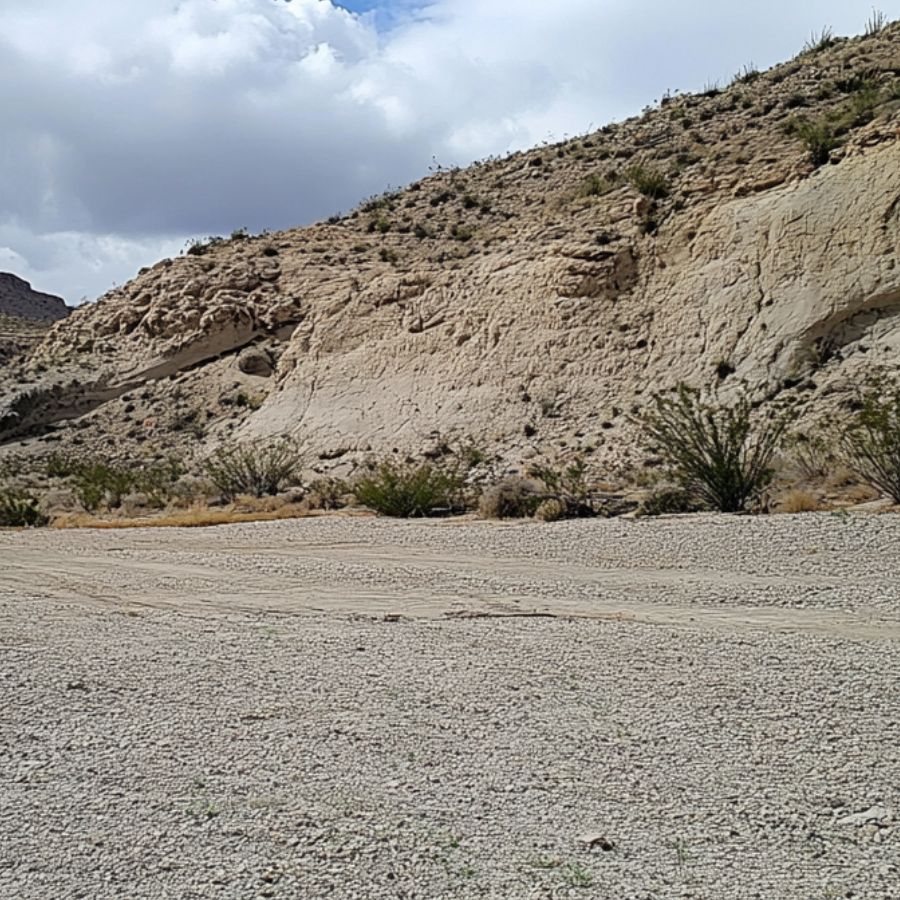
Visit abandoned feldspar mines. Check mine dump areas. Dig through tailings piles. Look for flat, shiny surfaces. The waste rock from old mining operations often contains overlooked pieces of labradorite that weren’t considered valuable during active mining periods but are perfect for collectors.
Stream Beds
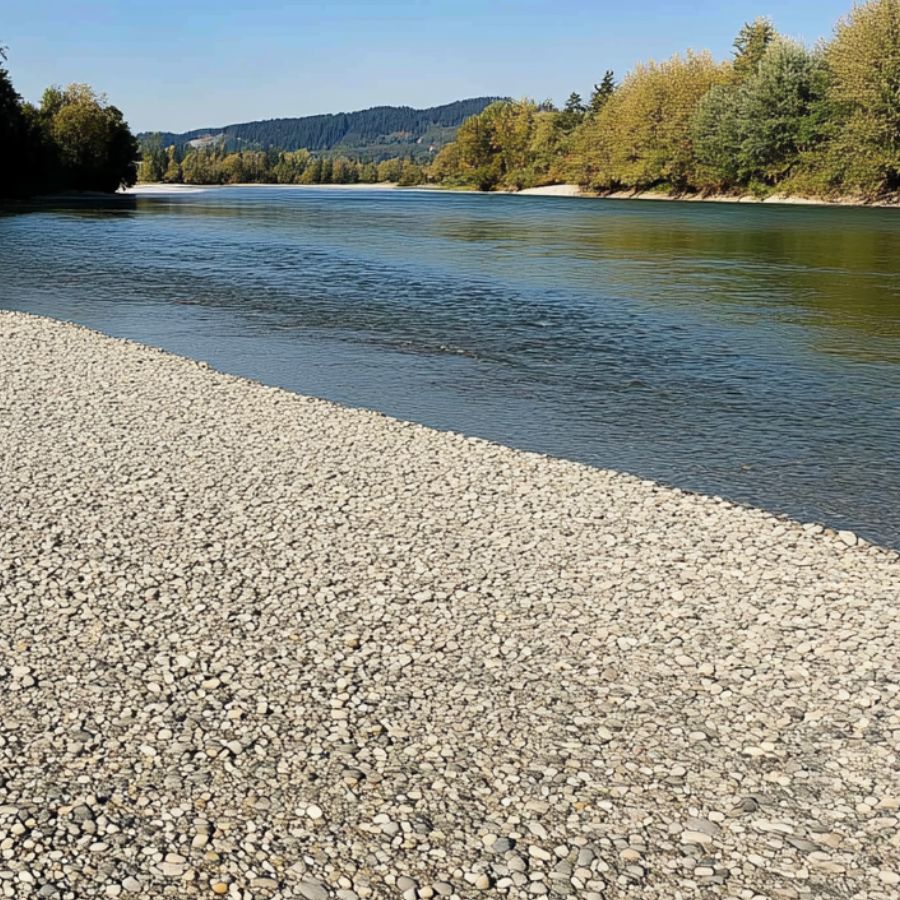
Search clear-water streams. Look under water-worn rocks. Check gravel bars after rain. Spot dark, plate-like stones. The constant water movement often exposes and polishes these stones, making them easier to identify when wet.
Some Great Places To Start
Here are some of the better places in the state to start looking for Labradorite:
Always Confirm Access and Collection Rules!
Before heading out to any of the locations on our list you need to confirm access requirements and collection rules for both public and private locations directly with the location. We haven’t personally verified every location and the access requirements and collection rules often change without notice.
Many of the locations we mention will not allow collecting but are still great places for those who love to find beautiful rocks and minerals in the wild without keeping them. We also can’t guarantee you will find anything in these locations since they are constantly changing.
Always get updated information directly from the source ahead of time to ensure responsible rockhounding. If you want even more current options it’s always a good idea to contact local rock and mineral clubs and groups
Tyson Creek

Tyson Creek flows through Hancock County in western Illinois, near the town of Niota. This stream is part of a larger network of waterways that drain the region.
The area’s special geology comes from the Warsaw Formation, known for its geodes and mineral variety. Layers of limestone and shale make up the creek bed, creating good conditions for mineral formation over millions of years.
When hunting for Labradorite at Tyson Creek, focus on exposed areas of the creek bed. Shallow sections where water has worn away the soil often reveal the underlying rock layers. Look especially at gravel bars where water has naturally sorted materials.
During the summer months, the creek’s lower water levels provide better access to potential rockhounding spots.
Mississippi River

The Mississippi River forms the western border of the state, separating it from Missouri and Iowa. This massive river system flows through various landscapes, including floodplains, bluffs, and wetlands.
Gravel bars and exposed riverbanks offer the best chances for finding labradorite. These areas reveal deposits of stones that the river has transported from northern regions. Many rockhounds visit after spring flooding recedes, as new material is often uncovered then.
Glacial activity from thousands of years ago contributed to the rich variety of rocks found here. River erosion continuously uncovers new specimens, making each visit potentially rewarding.
Some collectors recommend searching near tributary junctions, where additional minerals might accumulate.
Weekend expeditions are popular among local rock clubs, who sometimes organize group hunts along accessible stretches of the shoreline.
Spillman Creek

Spillman Creek is a stream near Pontoosuc in western Illinois. It sits at about 159 meters above sea level and flows through an area with hot summers and cold winters. The creek is known among rock collectors for its variety of mineral finds.
Labradorite can be found here, along with other treasures like geodes, calcite, and pyrite. These beautiful stones wait to be discovered by patient searchers who know where to look.
The creek’s sedimentary rock formations create perfect conditions for gemstone hunting. Water constantly reshapes the landscape, especially during rainy seasons when flooding helps expose new material.
Your best bet for finding labradorite is to check the creek’s banks and gravel beds. Look for spots where the water slows down, such as curves in the creek or areas behind large rocks. These places often collect heavier minerals as water deposits them over time.
Fayville Area
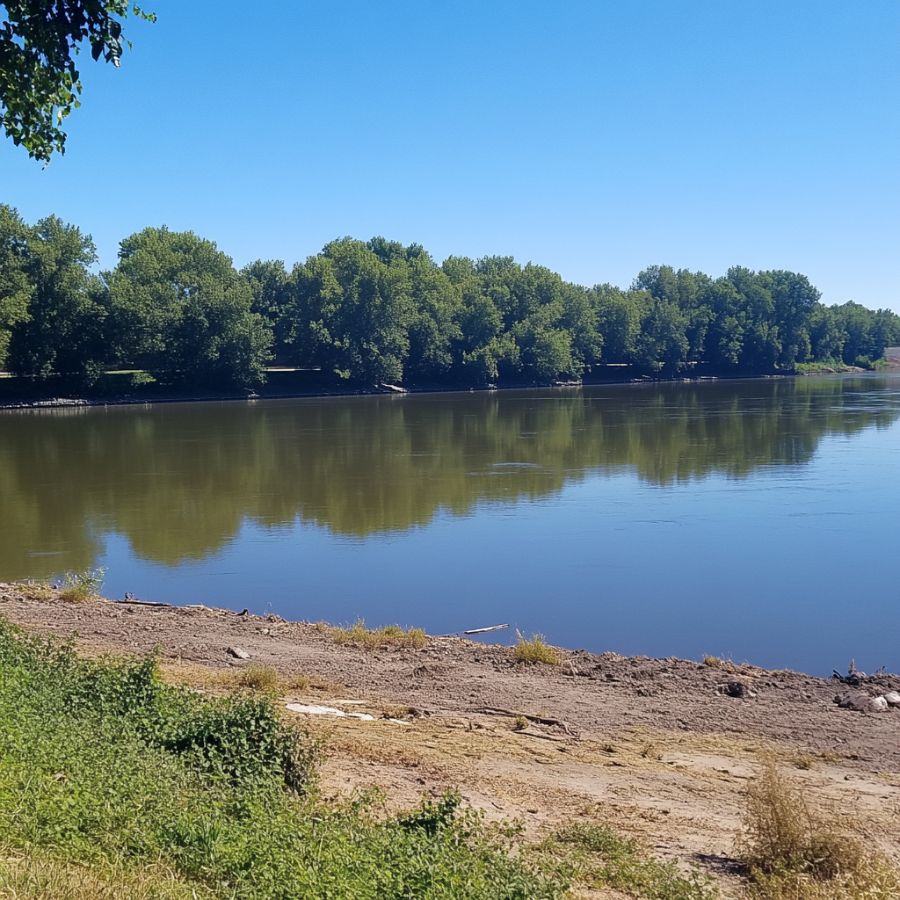
Fayville is a small community in Alexander County, located along the Mississippi River. This quiet spot sits in the southernmost part of the state, in an area called Little Egypt. The nearby river and flat lands make this place different from other parts of the state.
Rockhounds visit Fayville to search for various minerals, including Labradorite. The area’s connection to the Mississippi Embayment creates special conditions for finding interesting rocks. Most gemstone hunters focus on the riverbanks and gravel beds where the flowing water naturally sorts and deposits minerals.
The McNairy Formation extends into this region, bringing sand, silt, and clay deposits that might contain hidden treasures. River’s action constantly moves sediments around, sometimes revealing gemstones that were previously buried.
When exploring Fayville for Labradorite, check areas where water has washed away lighter materials. Spring is often the best time to visit after winter floods have refreshed the gravel beds with new material from upstream.
Edwards Area
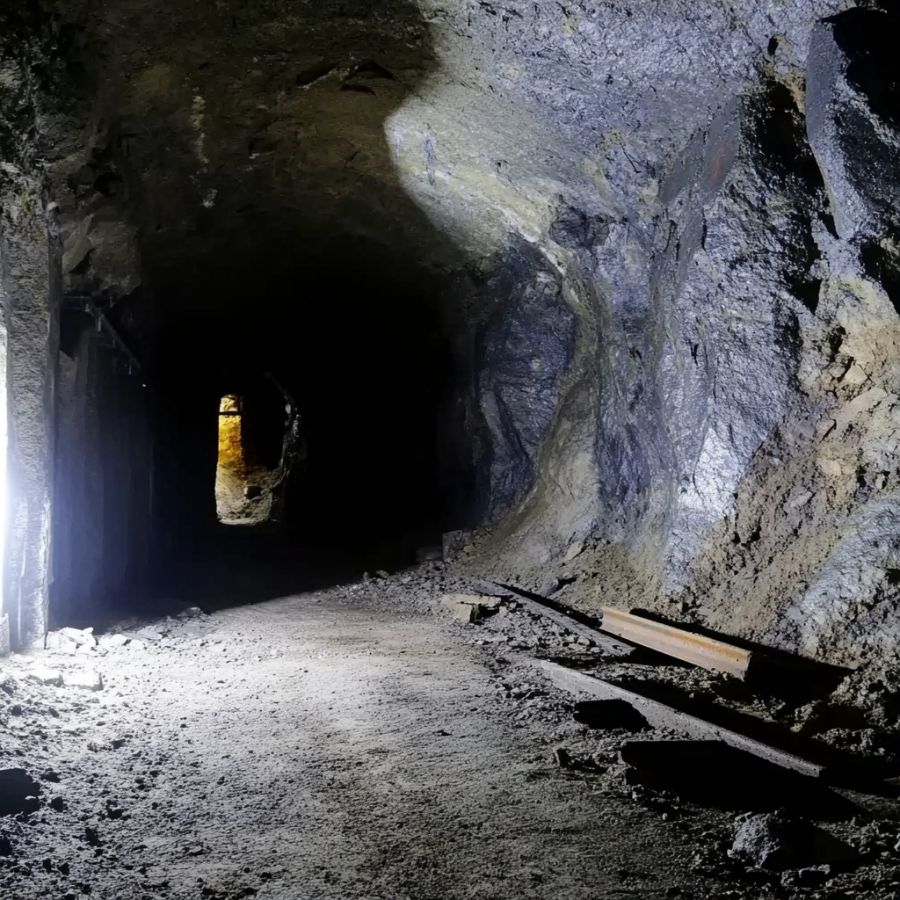
The Edwards Area is located in the southeastern part of the state, sitting between Wabash and White counties. This rural region covers about 223 square miles, mostly flat farmland with small streams like Bonpas Creek running through it. Albion serves as the county seat and largest city in this quiet part of Illinois.
Labradorite has been found in this area, though it’s not as common as in some other locations. Rockhounds visit Edwards Area because of its interesting Paleozoic-era sedimentary rock formations that date back millions of years.
Glacial deposits left behind by ancient ice sheets make this area worth exploring for gemstone hunters. These deposits sometimes contain unexpected treasures like labradorite that were carried here from northern regions.
Your best chances for finding labradorite are in exposed bedrock areas or where glacial materials have been uncovered. Local quarries may also yield good specimens. Many collectors bring simple tools like small shovels and screens to help sort through material.
Places Labradorite has been found by County
After discussing our top picks, we wanted to discuss the other places on our list. Below is a list of the additional locations along with a breakdown of each place by county.
| County | Location |
| Hancock | Hamilton |
| Hancock | Dallas City |
| Hancock | Niota |
| Rock Island | Cordova |
| Knox | Rapatee |
| Grundy | Coal City |
| Grundy | East Brooklyn |
| Henderson | Terre Haute |
| Alexander | Thebes |
| Perry | McKee Creek |
| LaSalle | Marseilles |
| LaSalle | Oglesby |
| LaSalle | Utica |
| Union | Anna |
| Union | Jonesboro |
| Jackson | Murphysboro |

